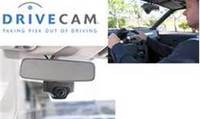SAN DIEGO--November 7, 2012: DriveCam, Inc. continues its Driving Insights Series with a look at the correlation of driving behaviors and collision severity in government fleets. The key finding in DriveCam's analysis reveals that it is possible to identify behaviors that indicate an increased likelihood of a collision, but reducing the frequency of these behaviors may not impact the severity of the collisions. By understanding some of the commonly viewed causes of collisions, fleet and safety managers are better able to identify drivers who are more likely to be involved in more severe collisions.
“We found many instances of this correlation. For instance, drivers were more likely to have a history of Not Looking Far Ahead, but these were not the leading indicators of a future collision.”
The most difficult part of a collision is understanding what caused it. Witness statements are often inaccurate. Driver recollections can be hazy or biased to protect themselves. And, conclusions in police reports may be faulty due to bad inputs or officer bias. The result is that many collision studies draw from this same data and are impacted by these same limitations.
By analyzing over 8,000 drivers from 10 public works fleets -- including more than 1,800 collisions and 400,000 non-collision video events -- DriveCam discovered that reducing the frequency of collisions doesn't always reduce the likelihood of severe collisions. What's most important is identifying the behaviors that correlate to severe collisions and eliminating those.
Providing further insight into the results of this study is Josh Botnen, DriveCam's Data Analytics Manager: "We found many instances of this correlation. For instance, drivers were more likely to have a history of Not Looking Far Ahead, but these were not the leading indicators of a future collision."
The complete study -- along with charts of frequently observed behaviors correlated to severity -- can be found here.
DriveCam addresses the causes of poor driving by combining data and video analytics with real-time driver feedback and coaching, resulting in reductions in collision-related costs and fuel consumption. This is accomplished using DriveCam's Driver Science Engine, a classification model that assists in predicting the riskiest drivers within a fleet. Through a patented, iterative process of scoring, prioritizing and tracking the results of driving behaviors, this model identifies those behaviors that will most likely lead to a collision and has provided significant savings by helping fleets more effectively manage their drivers. Driving behaviors are captured through in-cab video, which are objectively reviewed and scored and then passed on to the fleet for use in coaching drivers; video provides the objective context for discussion with drivers about their behavior. Fleets like Tyler manage the DriveCam Program through DriveCam OnlineŽ, a web-based online portal. Seamlessly integrated into DriveCam's DC3 event recorder and the DriveCam Online reporting solution, DriveCam's Fleet Tracking Solution provides a real-time view of fleet operations -- helping to ensure compliance and improve productivity -- with immediate access to real-time status, trip history and a suite of reports.
DriveCam's Driving Insights is designed to provide insight for executives and managers throughout a variety of transportation industries. It is derived from DriveCam's extensive database of driving events from over 20 billion driving miles analyzed annually -- the largest in the world. Driving Insights is released on a regular basis.



